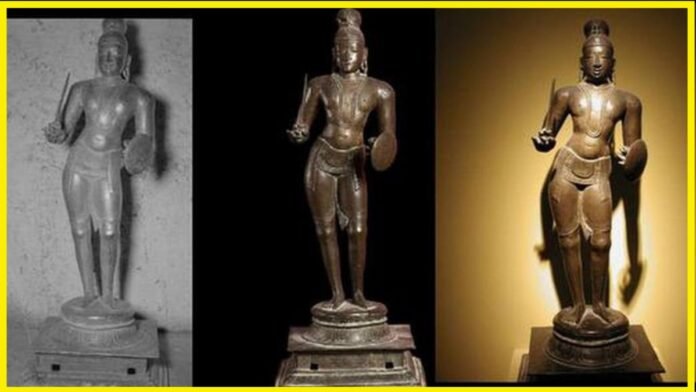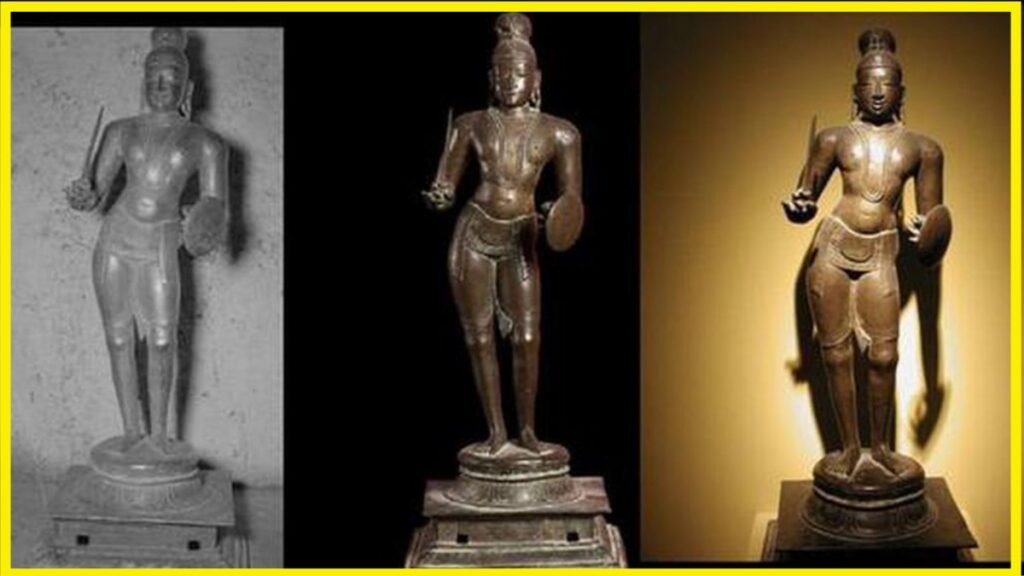
London: In a landmark decision, Oxford University’s Ashmolean Museum has agreed to return a significant cultural relic to India—a 500-year-old bronze statue of Saint Tirumangai Alwar. This resolution comes amidst a series of repatriations of Indian artifacts by Britain, highlighting a growing recognition of the importance of restoring cultural heritage to its countries of origin.
The statue, standing 60 cm tall, represents Saint Tirumangai Alwar, a revered figure in the Vaishnav tradition of Hinduism and the last of the 12 Alvar saints of South India. Known for his profound scholarship and poetic mastery, Thirumangai Alwar’s contributions to Tamil literature and Vaishnavite philosophy are celebrated throughout South India.
The journey of the statue to the Ashmolean Museum began in 1967 when it was acquired from the collection of Dr. J.R. Belmont at a Sotheby’s auction. However, the origins of the statue were called into question after an independent researcher alerted the museum to its potential provenance issues. Subsequent investigations revealed that the statue was likely removed from a temple in Tamil Nadu under dubious circumstances before finding its way to the British auction house.
On March 11, 2024, the Council of the University of Oxford endorsed the Indian High Commission’s claim for the statue’s return. The final decision now rests with the Charity Commission, which oversees such matters of cultural restitution.
This act of repatriation is part of a broader trend of returning stolen artifacts, with Britain having previously returned several other Indian artifacts, including a limestone sculpture from Andhra Pradesh and a 17th-century “Navneet Krishna” bronze statue from Tamil Nadu. These gestures of goodwill and respect for cultural heritage underscore the ongoing efforts to rectify historical wrongs and foster international cultural cooperation.

The return of Saint Tirumangai Alwar’s statue is not only a victory for India’s cultural preservation efforts but also a testament to the global movement advocating for the rightful restoration of cultural properties. It serves as a reminder of the rich and diverse history that these artifacts represent and the collective responsibility to safeguard and honor our shared human heritage.
















































